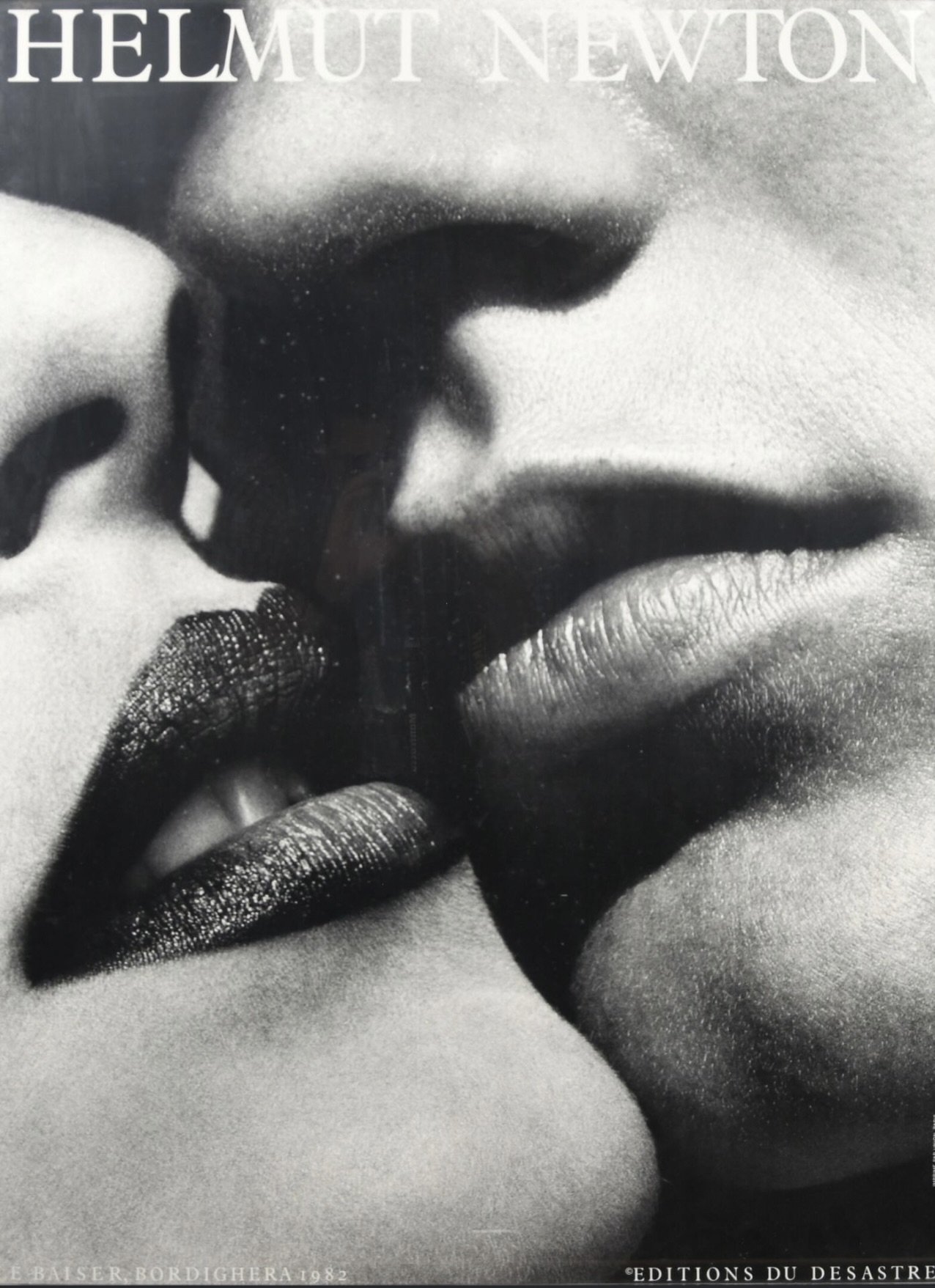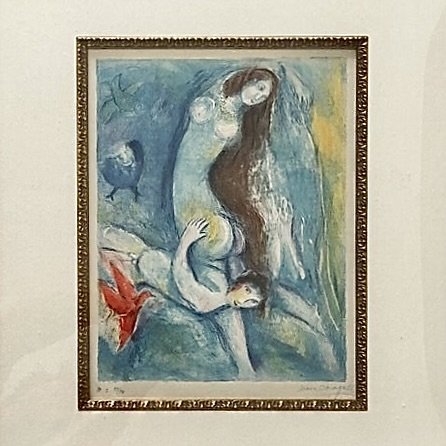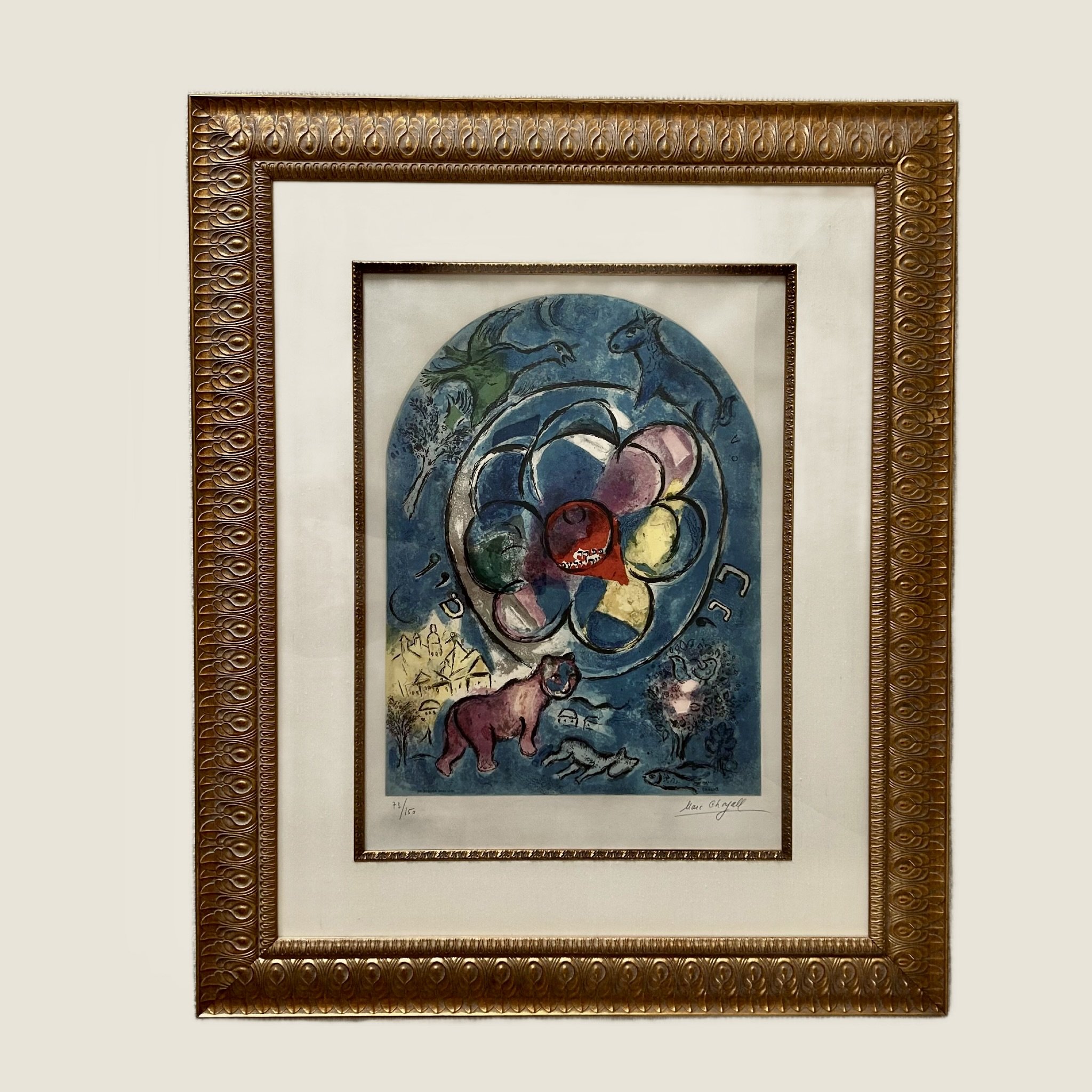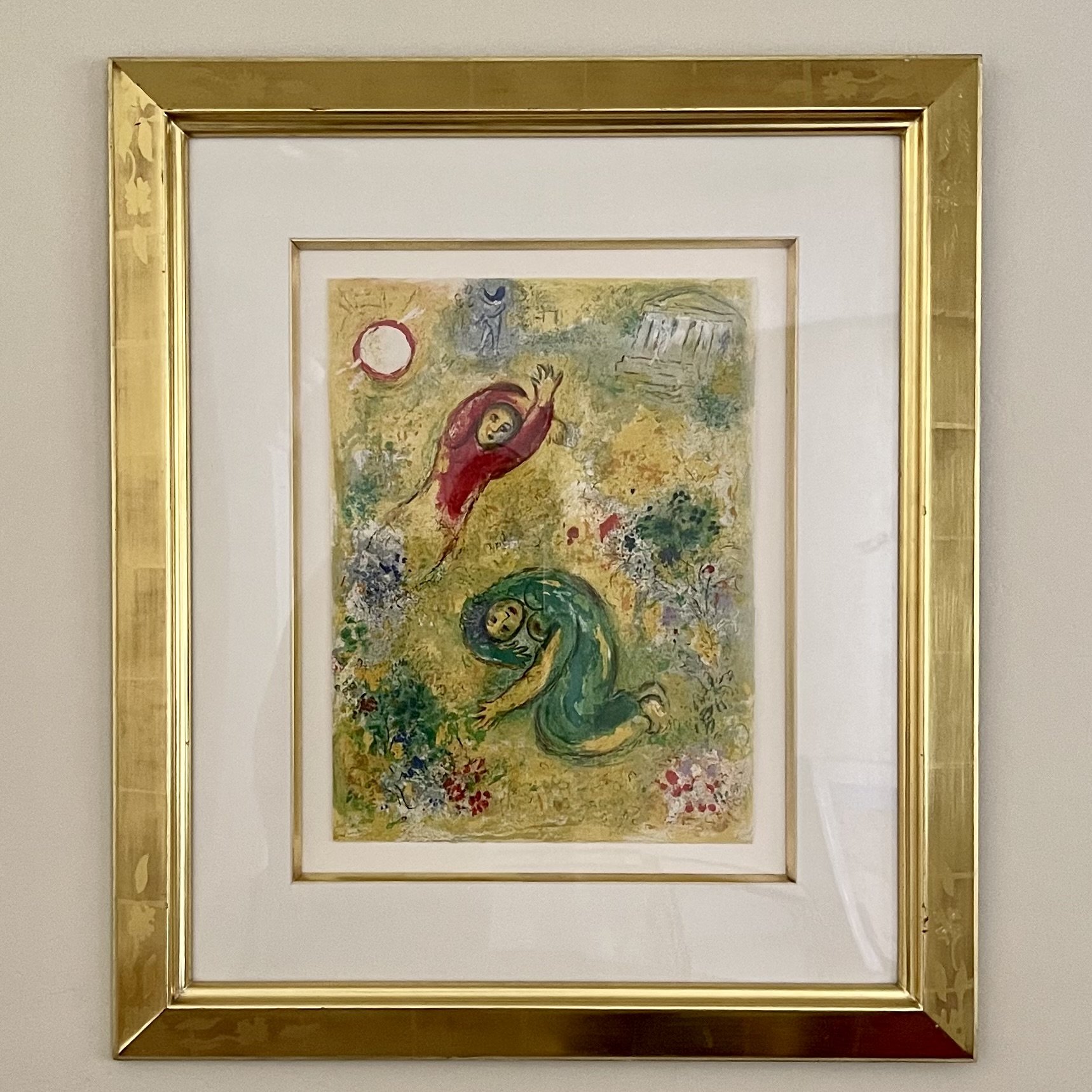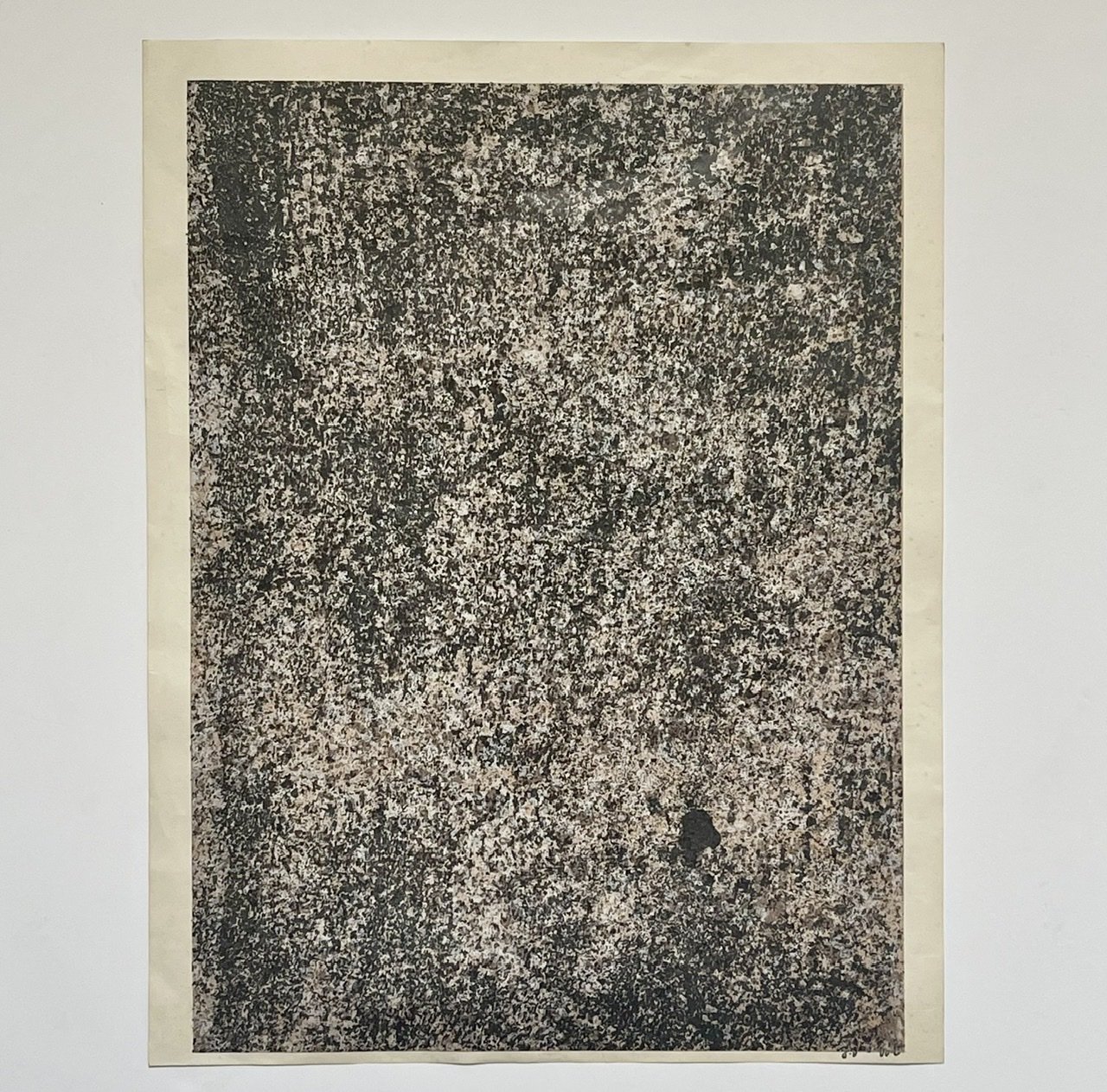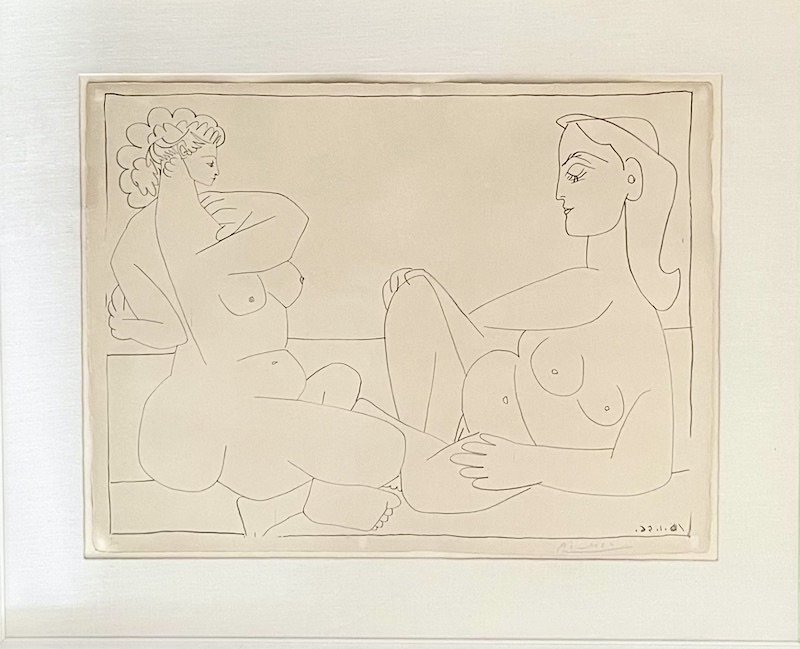 Image 1 of 4
Image 1 of 4

 Image 2 of 4
Image 2 of 4

 Image 3 of 4
Image 3 of 4

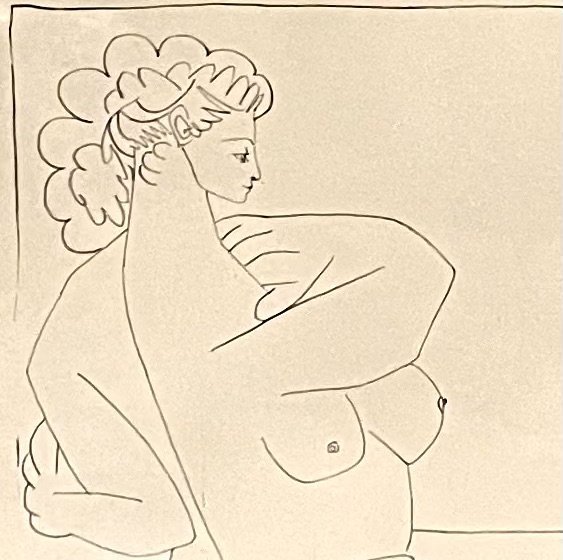 Image 4 of 4
Image 4 of 4





Picasso Pablo Deux Femmes Sur La Plage, 1956 Signed in Pencil by the Artist
Picasso Pablo (1881-1973)
Deux Femmes Sur la Plage, 1956 (Two Women on the Beach)
Lithograph, on Arches paper, with full margins.
Signed and numbered 07/50 in pencil
Published by Édition Galerie Louise Leiris, Paris, framed.
Paper Size: 19 3/4 x 26 in. (50.2 x 66 cm)
Deux Femmes Sur la Plage is one of Picasso’s most joyous and powerful prints, a print that has only come onto the open market twice in the last twenty-five years. Picasso, through the simple application of a lithographic line, cuts straight to the heart of modern hedonism—an intense depiction of fantasy and anguish by the sea. Deux Femmes is a great visual representation of the pursuit of pleasure on sun-drenched shores.
The evolution of Picasso’s printed work closely follows his development as a painter, and the genesis of Deux Femmes Sur la Plage can be traced back to his masterwork Two Women Running on the Beach, painted in the summer of 1922. It is a monument to the new freedoms that swept the world after the First World War.
It was in that decade that the French Riviera became the image of sultry decadence, a mythic status it would retain through the 20th century until global resorts offered still steamier thrills. Picasso had money by then and decamped to the south of France every summer. It also inspired great paintings, as Picasso mythologised the new beach culture in works that go far beyond the elegance of Impressionist marine painting.
Picasso and Printmaking
By almost any standard, Picasso could be considered the most influential printmaker of the 20th century. The majority of his vast graphic oeuvre of over two thousand unique images consists of intaglio prints that he scratched, scraped, gouged, or etched into a copper plate, before he switched to lithography and colour relief printing later in his career. Working in close collaboration with some of the best master printers of his generation, Picasso vigorously explored technical innovations that not only fuelled his graphic imagination but also expanded the possibilities of printmaking as an expressive art form.
Picasso and Lithography
Unlike intaglio printmaking techniques like engraving and etching, lithography is essentially a planographic (flat) process. It relies on the repulsion of grease and water to transfer a hand-drawn image from a smooth surface (originally a piece of limestone) onto a sheet of paper. In its most rudimentary form, the lithograph requires an artist to draw or paint with a greasy crayon or greasy ink (the tusche) directly on the stone, which is then chemically fixed, wet, inked, and printed, producing an exact, reversed copy of the tusche drawing. Since the development of transfer papers in the 19th century, an artist has been able to work up their design in the studio and send it off to the printer’s shop for chemical transfer, reversal, and production. The result is an exactly reproducible image that captures all the tonal subtleties of even a pencil drawing, but requires no specialised printmaking skills on the artist’s part.
Location
Shoreditch, London
Picasso Pablo (1881-1973)
Deux Femmes Sur la Plage, 1956 (Two Women on the Beach)
Lithograph, on Arches paper, with full margins.
Signed and numbered 07/50 in pencil
Published by Édition Galerie Louise Leiris, Paris, framed.
Paper Size: 19 3/4 x 26 in. (50.2 x 66 cm)
Deux Femmes Sur la Plage is one of Picasso’s most joyous and powerful prints, a print that has only come onto the open market twice in the last twenty-five years. Picasso, through the simple application of a lithographic line, cuts straight to the heart of modern hedonism—an intense depiction of fantasy and anguish by the sea. Deux Femmes is a great visual representation of the pursuit of pleasure on sun-drenched shores.
The evolution of Picasso’s printed work closely follows his development as a painter, and the genesis of Deux Femmes Sur la Plage can be traced back to his masterwork Two Women Running on the Beach, painted in the summer of 1922. It is a monument to the new freedoms that swept the world after the First World War.
It was in that decade that the French Riviera became the image of sultry decadence, a mythic status it would retain through the 20th century until global resorts offered still steamier thrills. Picasso had money by then and decamped to the south of France every summer. It also inspired great paintings, as Picasso mythologised the new beach culture in works that go far beyond the elegance of Impressionist marine painting.
Picasso and Printmaking
By almost any standard, Picasso could be considered the most influential printmaker of the 20th century. The majority of his vast graphic oeuvre of over two thousand unique images consists of intaglio prints that he scratched, scraped, gouged, or etched into a copper plate, before he switched to lithography and colour relief printing later in his career. Working in close collaboration with some of the best master printers of his generation, Picasso vigorously explored technical innovations that not only fuelled his graphic imagination but also expanded the possibilities of printmaking as an expressive art form.
Picasso and Lithography
Unlike intaglio printmaking techniques like engraving and etching, lithography is essentially a planographic (flat) process. It relies on the repulsion of grease and water to transfer a hand-drawn image from a smooth surface (originally a piece of limestone) onto a sheet of paper. In its most rudimentary form, the lithograph requires an artist to draw or paint with a greasy crayon or greasy ink (the tusche) directly on the stone, which is then chemically fixed, wet, inked, and printed, producing an exact, reversed copy of the tusche drawing. Since the development of transfer papers in the 19th century, an artist has been able to work up their design in the studio and send it off to the printer’s shop for chemical transfer, reversal, and production. The result is an exactly reproducible image that captures all the tonal subtleties of even a pencil drawing, but requires no specialised printmaking skills on the artist’s part.
Location
Shoreditch, London
Picasso Pablo (1881-1973)
Deux Femmes Sur la Plage, 1956 (Two Women on the Beach)
Lithograph, on Arches paper, with full margins.
Signed and numbered 07/50 in pencil
Published by Édition Galerie Louise Leiris, Paris, framed.
Paper Size: 19 3/4 x 26 in. (50.2 x 66 cm)
Deux Femmes Sur la Plage is one of Picasso’s most joyous and powerful prints, a print that has only come onto the open market twice in the last twenty-five years. Picasso, through the simple application of a lithographic line, cuts straight to the heart of modern hedonism—an intense depiction of fantasy and anguish by the sea. Deux Femmes is a great visual representation of the pursuit of pleasure on sun-drenched shores.
The evolution of Picasso’s printed work closely follows his development as a painter, and the genesis of Deux Femmes Sur la Plage can be traced back to his masterwork Two Women Running on the Beach, painted in the summer of 1922. It is a monument to the new freedoms that swept the world after the First World War.
It was in that decade that the French Riviera became the image of sultry decadence, a mythic status it would retain through the 20th century until global resorts offered still steamier thrills. Picasso had money by then and decamped to the south of France every summer. It also inspired great paintings, as Picasso mythologised the new beach culture in works that go far beyond the elegance of Impressionist marine painting.
Picasso and Printmaking
By almost any standard, Picasso could be considered the most influential printmaker of the 20th century. The majority of his vast graphic oeuvre of over two thousand unique images consists of intaglio prints that he scratched, scraped, gouged, or etched into a copper plate, before he switched to lithography and colour relief printing later in his career. Working in close collaboration with some of the best master printers of his generation, Picasso vigorously explored technical innovations that not only fuelled his graphic imagination but also expanded the possibilities of printmaking as an expressive art form.
Picasso and Lithography
Unlike intaglio printmaking techniques like engraving and etching, lithography is essentially a planographic (flat) process. It relies on the repulsion of grease and water to transfer a hand-drawn image from a smooth surface (originally a piece of limestone) onto a sheet of paper. In its most rudimentary form, the lithograph requires an artist to draw or paint with a greasy crayon or greasy ink (the tusche) directly on the stone, which is then chemically fixed, wet, inked, and printed, producing an exact, reversed copy of the tusche drawing. Since the development of transfer papers in the 19th century, an artist has been able to work up their design in the studio and send it off to the printer’s shop for chemical transfer, reversal, and production. The result is an exactly reproducible image that captures all the tonal subtleties of even a pencil drawing, but requires no specialised printmaking skills on the artist’s part.
Location
Shoreditch, London

